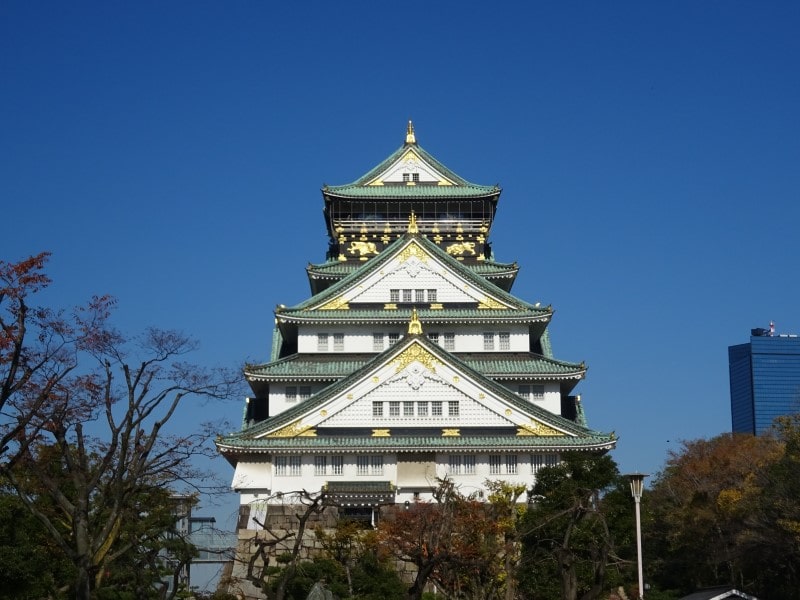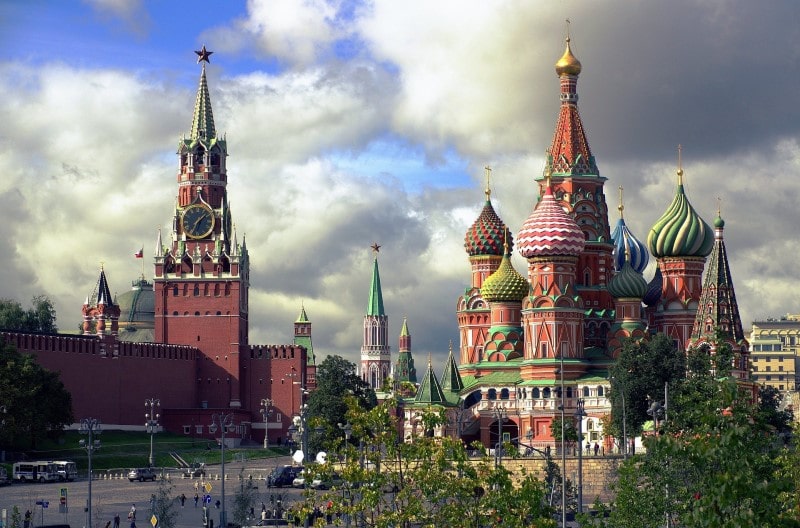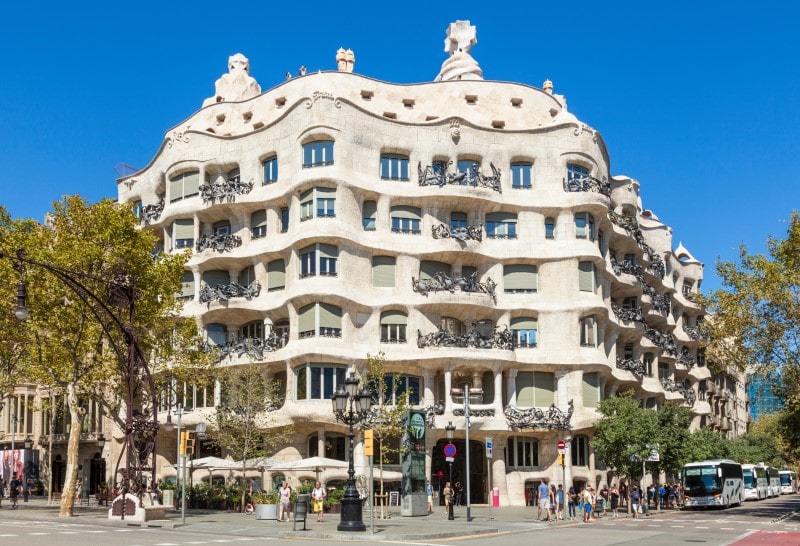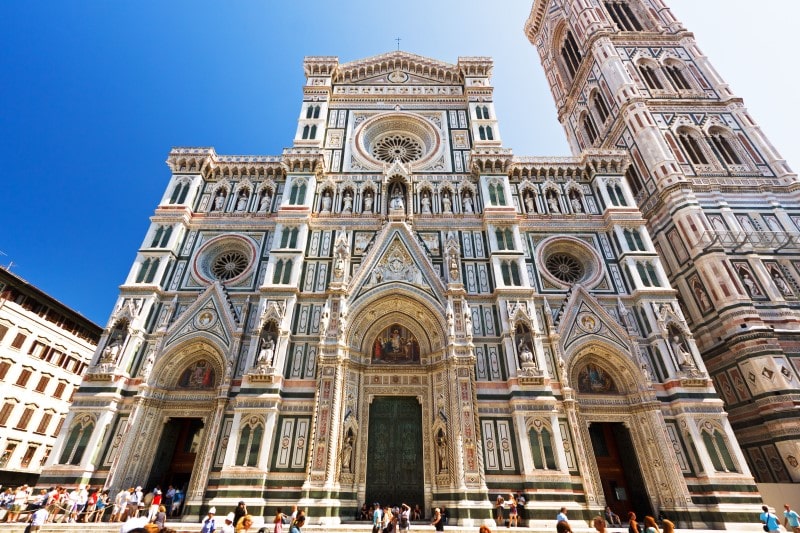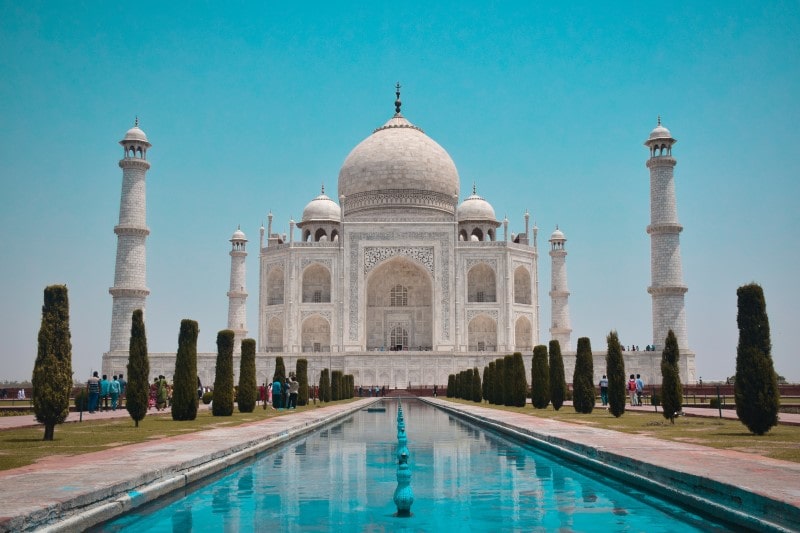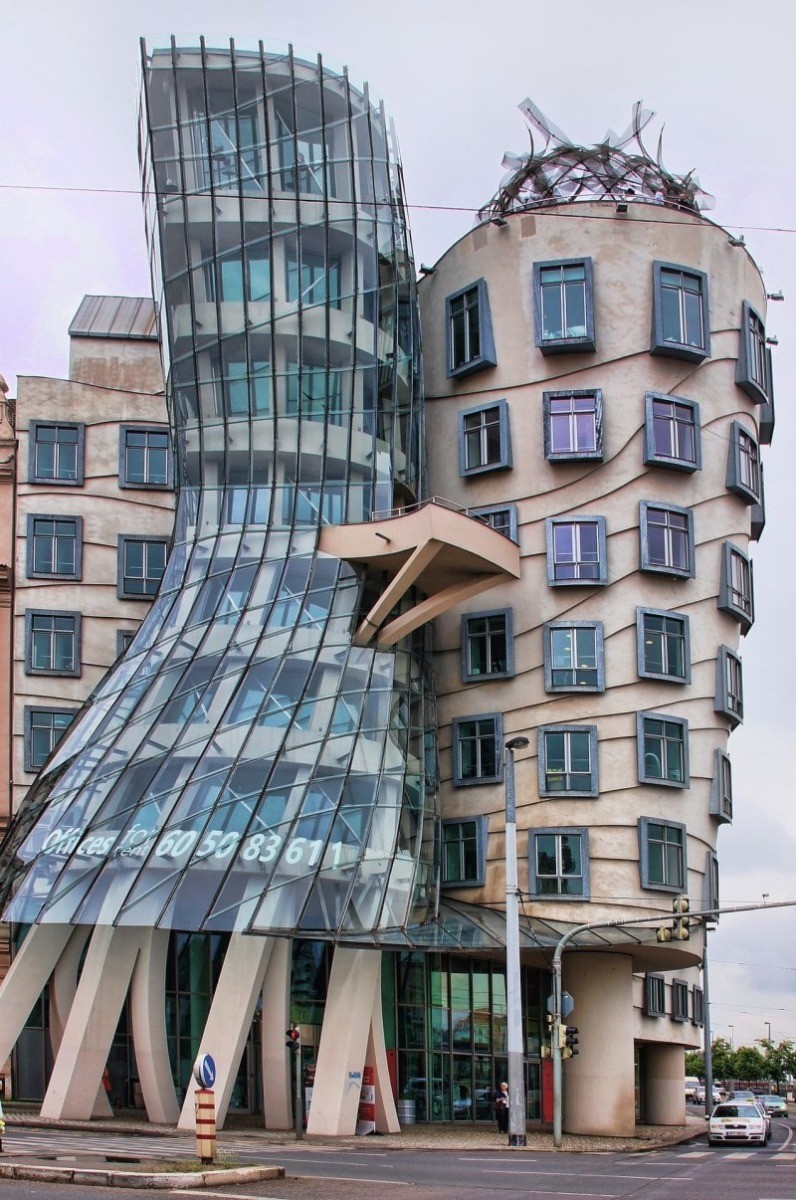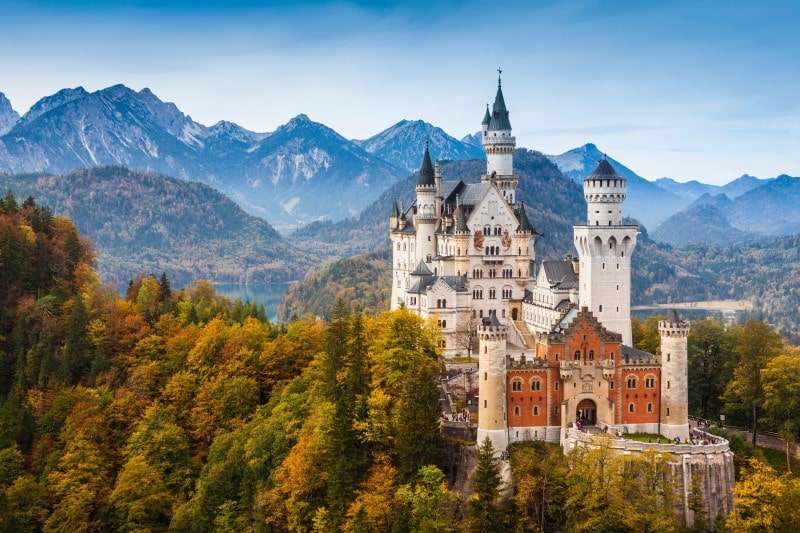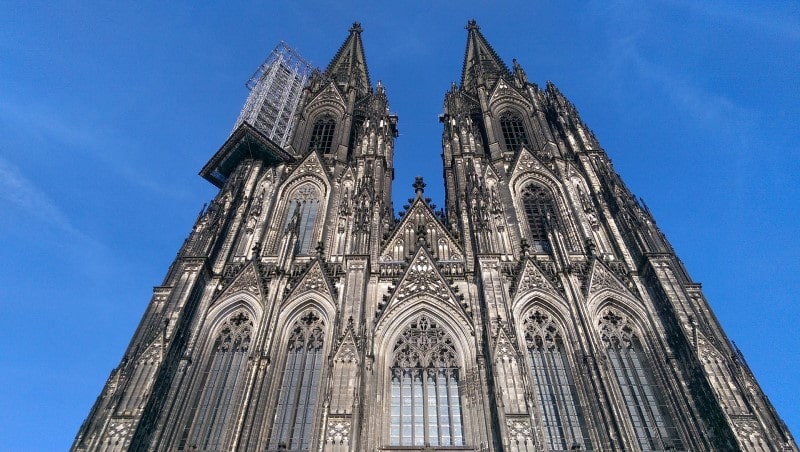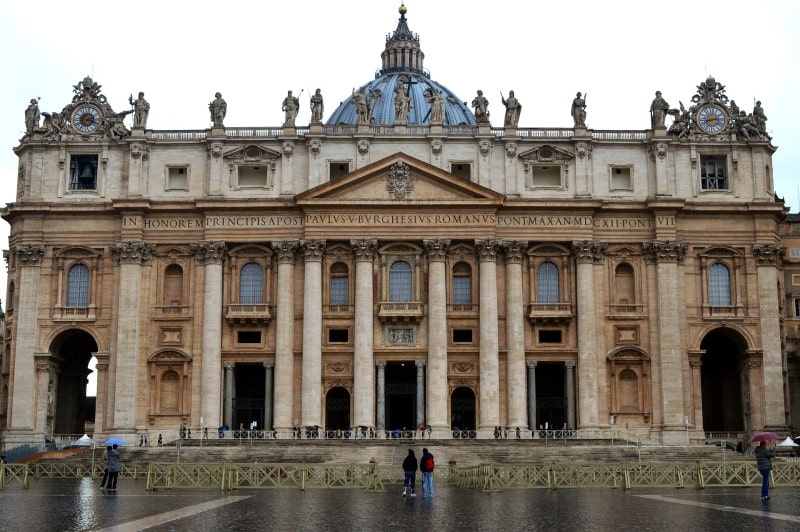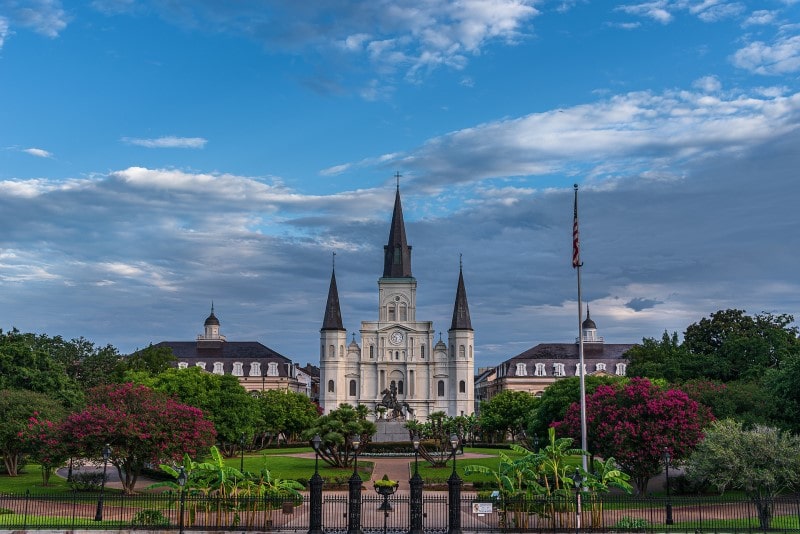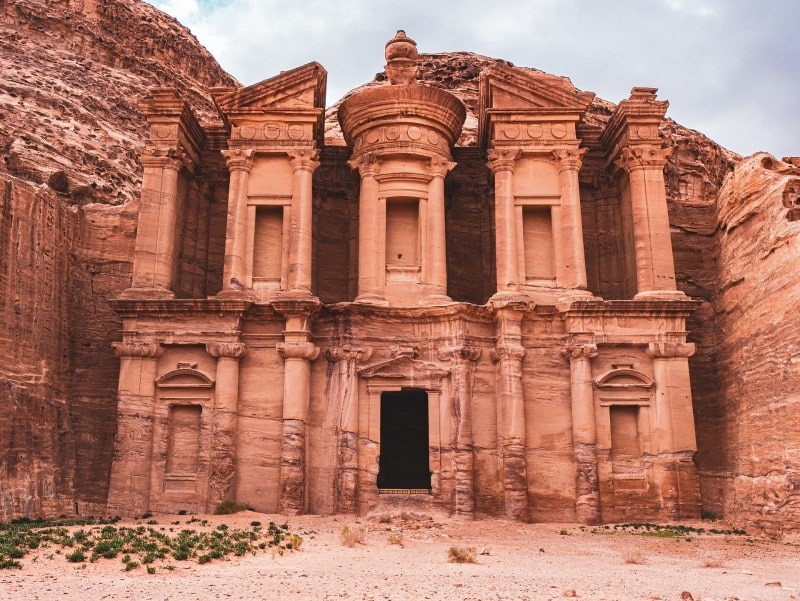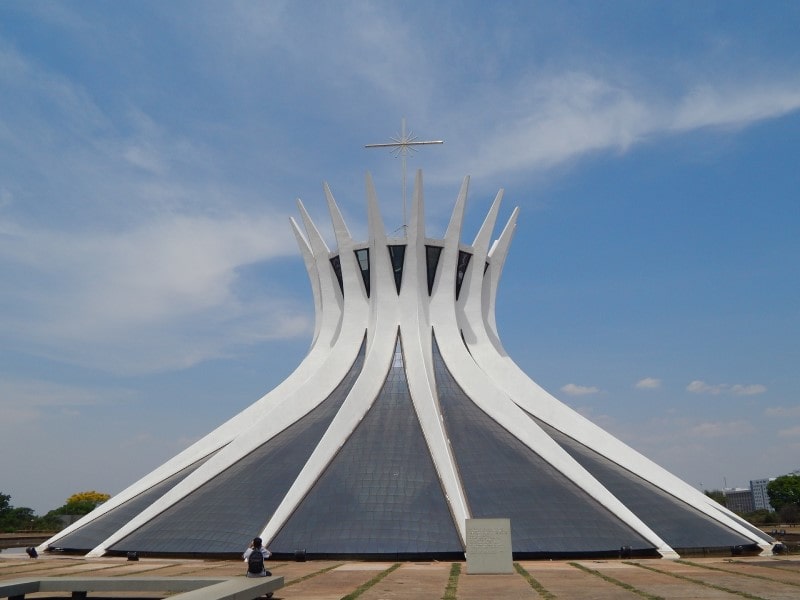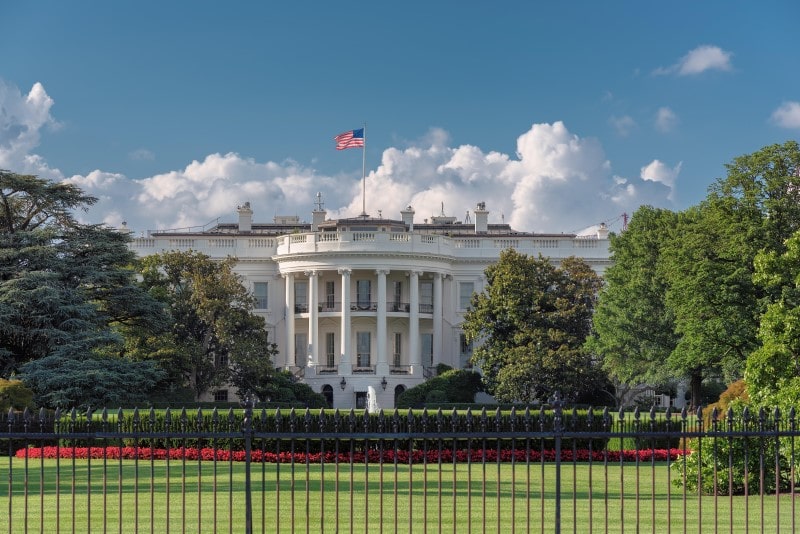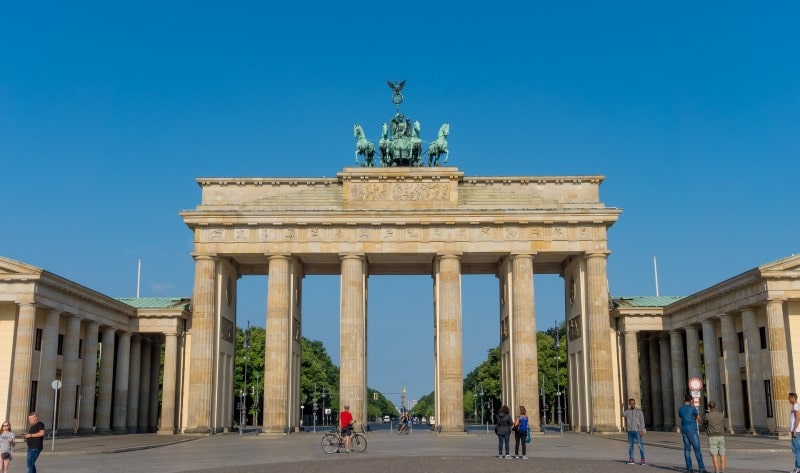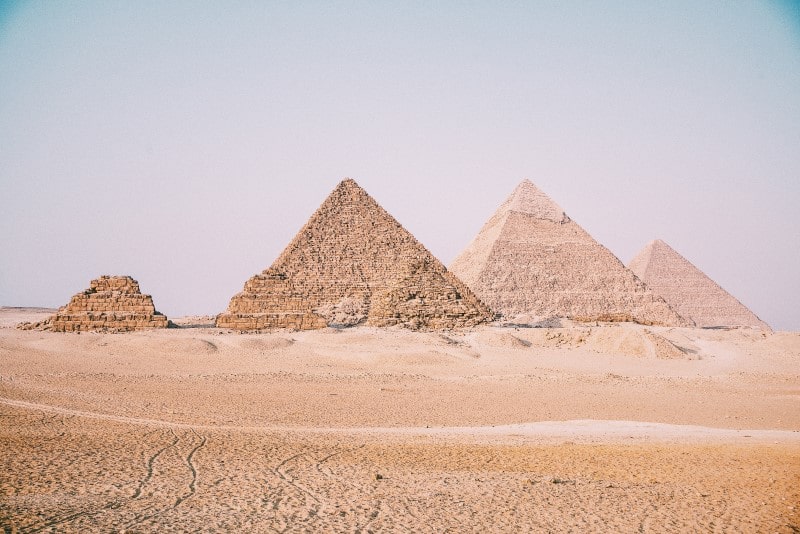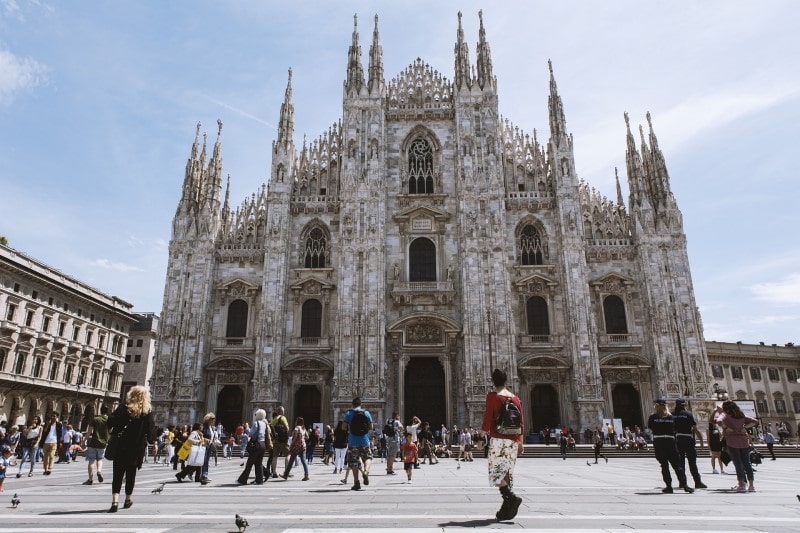The World’s Most Beautiful Buildings, According to Science
From the Great Pyramid of Giza in Egypt, to La Sagrada Familia in Spain – there are so many incredible examples of exquisite architecture and design around the world. Some, like Petra in Jordan were constructed thousands of years ago, and others, like The Shard, are only a few years old, but which of them is actually the most beautiful to look at?
As we care about great design beyond the roof tiles or roof windows of a structure, and how all components come together to create a truly grand design, we wanted to celebrate some of the most spectacular buildings and landmarks around the world. To do that, we’ve used the ‘golden ratio’, an ancient algebraic equation widely regarded as a barometer of beauty, to analyse the designs of the world’s most iconic structures and see how each stacks up against the ratio’s rules. In turn, revealing which is officially the most beautiful, according to science. The results are in!
The Most Beautiful Building in The World
Our research reveals that St. Paul’s Cathedral in London can now lay claim to being the most beautiful building ever constructed, closely followed by Singapore’s Marina Bay Sands Hotel in second place, and Westminster Abbey in third.
Constructed in the 1700’s, the baroque stylings of St Paul’s Cathedral in London came out on top for its aesthetic perfection, with a 72.28% alignment to the golden ratio, the highest out of all landmarks analysed.
What is the Golden Ratio?
In a nutshell, it’s a benchmark for ideal proportions.

The golden ratio has long been used as a gauge of good looks, with many historical artists and architects using it in their creations, including Michelangelo, who famously used it in his painting, The Creation of Adam, on the ceiling of the Sistine Chapel.
For this piece of research, we analysed 100 of the world’s most famous architectural works, and compared their designs against the dimensions of the golden ratio, to determine how visually appealing each is to the human eye.
To do this, we plotted the most common points found on the front-on ‘faces’ of each of the buildings, including the top and bottom corners, the building’s centre, and equidistant points around the circumference, before comparing the distance between these markers to those laid out by the ratio.
The Top 20 Most Beautiful Buildings in the World
1. St Paul’s Cathedral, England, Built in 1710 - 72.28% Aligned to the Golden Ratio
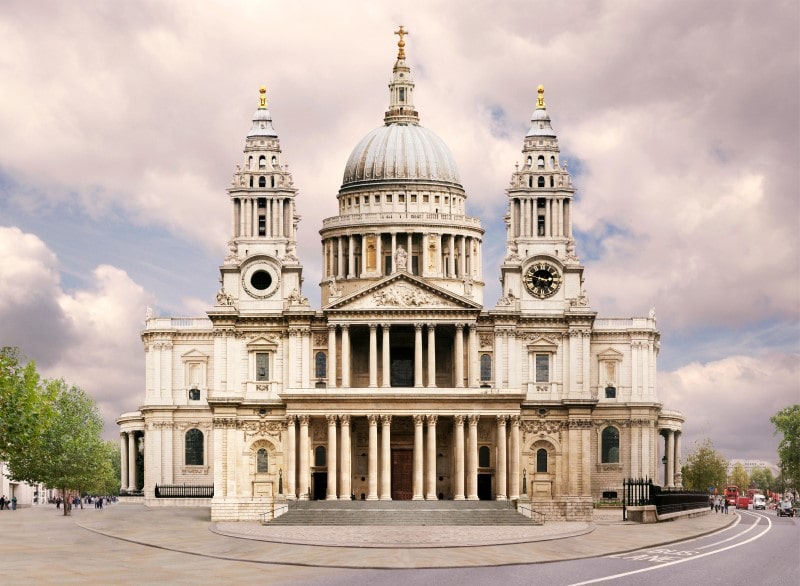
Taking the top spot, St. Paul’s Cathedral is a shining example of this classic craftsmanship and London’s skyline simply wouldn’t be complete without its famous dome.
Having been destroyed four times within its lifespan, Sir Christopher Wren - a famous scientist, mathematician and architect, spent nine years planning the cathedrals rebuild after it was destroyed in the Great Fire of London.
He was intent on keeping the traditional English medieval cathedral style alive, while being heavily inspired by St. Peter’s Basilica in the Vatican City, which placed as the 12th most beautiful building on Earth. Today, St. Paul’s receives approximately two million visitors per year, queuing up to take in its impressive exterior and intricate interiors.
2. Marina Bay Sands Hotel, Singapore, Built in 2010 - 70.88% Aligned to the Golden Ratio
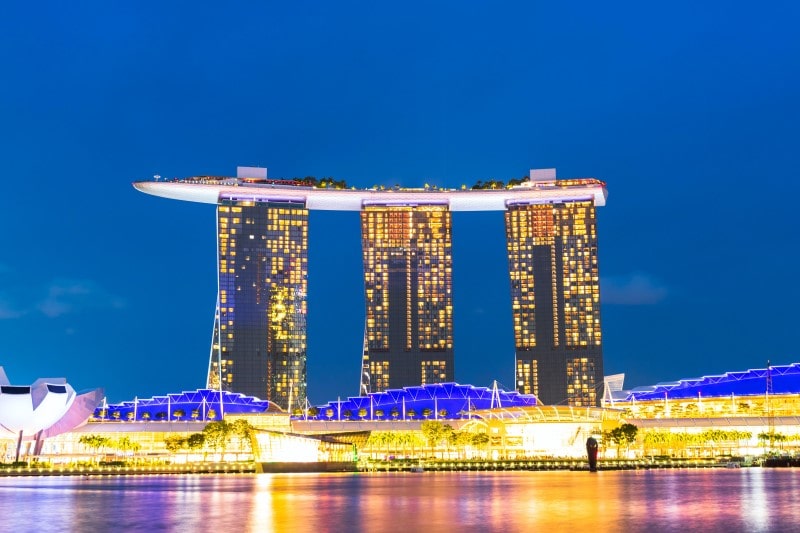
Designed by Moshe Safdie, the Marina Bay Sands is an integrated resort that includes a 2,561-room hotel, an exhibition centre, a shopping mall, a museum, a large theatre, restaurants, two floating crystal pavilions, and the world's largest atrium casino with 500 tables and 1,600 slot machines.
The structure consists of three towers which are topped by SkyPark that boasts a 150-meter infinity swimming pool, set on top of the world's largest public cantilevered platform, which overhangs the north tower.
3. Westminster Abbey, England, Built in 1745 - 70.50% Aligned to the Golden Ratio
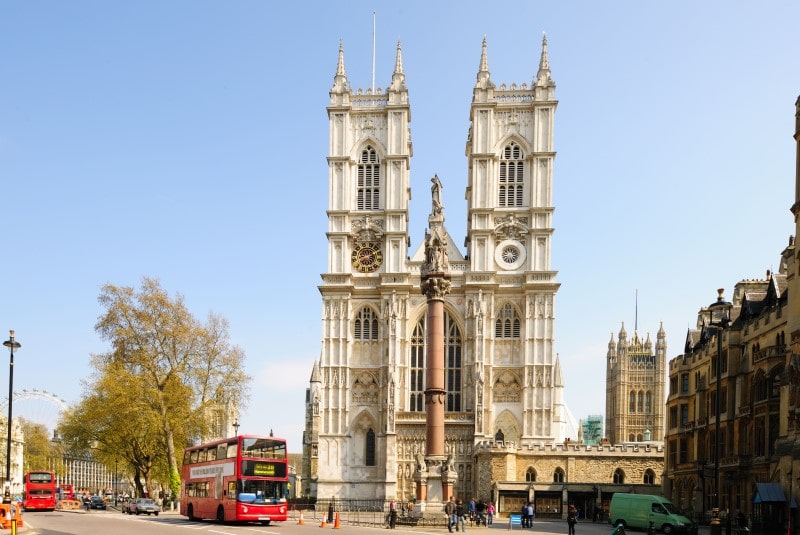
Completed in 1745, Westminster Abbey is a large, mainly Gothic abbey church in London. One of the UK’s most notable religious buildings, it’s the traditional place of coronation and a burial for British monarchs.
In fact, the Abbey is actually the burial site of more than 3300 people, including at least 16 monarchs, 8 Prime Ministers, poets, actors, scientists and military leaders. It’s also been the location for many royal weddings, including William and Kate’s wedding in 2011.
The abbey was heavily damaged in the bombings in World War II, but it was restored soon after the war.
4. Osaka Castle, Japan, Built in 1583 - 70.38% Aligned to the Golden Ratio
Osaka Castle is one of Japan's most famous landmarks. The central castle building is five stories on the outside and eight stories on the inside.
Covering around 61,000 square meters, the castle grounds contain thirteen structures that have now been designated as important cultural assets by the Japanese government.
5. St Basil’s Cathedral, Russia, Built in 1561 - 69.10% Aligned to the Golden Ratio
The Cathedral is an Orthodox church in Red Square, Moscow, and is one of the most popular cultural symbols of Russia. Built in 1561 on orders from Ivan IV Vasilyevich, the cathedral has nine domes (each one corresponding to a different church) and is said to be shaped like the flame of a bonfire rising into the sky.
6. Casa Mila, Spain, Built in 1912 - 68.64% Aligned to the Golden Ratio
Casa Milà is a modernist building in Barcelona, Spain and it was the last private residence designed by Gaudí. When commissioned in 1906 it was controversial because of its undulating stone façade and twisting wrought iron balconies, but in 1984, it was declared a World Heritage Site by UNESCO.
7. Florence Cathedral, Italy, Built in 1436 - 67.52% Aligned to the Golden Ratio
The construction of Florence Cathedral began in 1296 in the Gothic style, and was structurally completed by 1436. The three buildings that make up the cathedral complex are part of the UNESCO World Heritage Site that covers the historic centre of Florence.
The basilica is one of Italy's largest churches, and the dome was once the largest in the world. To this day it remains the largest brick dome ever constructed.
8. Taj Mahal, India, Built in 1653 - 67.45% Aligned to the Golden Ratio
One of the seven modern wonders of the world, The Taj Mahal was originally commissioned by the emperor in 1632 to house the tomb of his favourite wife. The complex is believed to have been built at an estimated cost an estimated of £70 million in today’s money.
In 1983, The Taj Mahal was designated as a UNESCO World Heritage Site and it is regarded by many as the best example of Mughal architecture and a symbol of India's rich history. The Taj Mahal is also regularly mentioned alongside the golden ratio, so is no surprise its ranked in the top 10!
9. Dancing House, Czech Republic, Built in 1996 - 66.87% Aligned to the Golden Ratio
The non-traditional design of the Dancing House was controversial when constructed because the house stands out among the Baroque, Gothic and Art Nouveau buildings that Prague is famous for.
The house was originally named Fred and Ginger (after the dancers Fred Astaire and Ginger Rogers – as it was thought the house resembles a pair of dancers), but this nickname is now rarely used.
10. Neuschwanstein Castle, Germany, Built in 1886 - 63.10% Aligned to the Golden Ratio
Neuschwanstein Castle is a 19th-century palace in southwest Bavaria, Germany. The palace was commissioned by King Ludwig II of Bavaria as a retreat, and he paid for the palace out of his personal fortune and extensive borrowing, rather than Bavarian public funds.
More than 61 million people have visited Neuschwanstein Castle, with as many as 6,000 per day in the summer. Notably, this was also the original inspiration behind Sleeping Beauty’s beloved Disney Castle.
11. Cologne Cathedral, Germany, Built in 1880 - 61.69% Aligned to the Golden Ratio
Completed in 1880, some 632 years after construction began, you would hope that Cologne Cathedral turned out to be impressive, and the golden ratio definitely agrees. Placing just outside of the top 10, this UNESCO world heritage site plays home to the seat of the Archbishop of Cologne and is a prime example of gothic architecture, and just how much it stands out in a skyline.
12. St Peter’s Basilica, Vatican City, Built in 1626 - 61.47% Aligned to the Golden Ratio
We mentioned Michelangelo and his use of the golden ratio earlier, so it makes sense that a building he played a part in the design of, would rank highly when it comes to scientific beauty. The Renaissance structure is the largest church on Earth, and is widely regarded as one of the holiest Catholic shrines, whilst not actually being the mother church of Catholicism. Impressive from every angle, there’s no surprise it is held in high regard by the ratio and the human eye.
13. St Louis Cathedral, USA, Built in 1850 - 58.10% Aligned to the Golden Ratio
Our research found multiple buildings in the United States that adhere highly to the rules of the golden ratio, including this, the oldest cathedral in use in the USA. Originally built in 1718, the cathedral was burnt during the great fire of 1788 and therefore largely rebuilt and redesigned to how it stands today.
14. Petra, Jordan, Built in the 5th century BC - 57.12% Aligned to the Golden Ratio
Described by UNESCO as ‘one of the most precious cultural properties of man’s cultural heritage’ Petra in Jordan is a true wonder of the world and is a place that millions have visited to stand in awe of its design, and the fact this wonder was built as early as 5th century BC.
15. Cathedral of Brasilia, Brazil, Built in 1970 - 55.79% Aligned to the Golden Ratio
Arguably the most unusual design in our rankings, its slightly surprising to see the hyperboloid structure of the cathedral ranking so highly when it comes to the golden ratio, however its symmetry and perfect angles have no doubt assisted its score. There is also no arguing that it’s an amazing structure to behold!
16. Faisal Mosque, Pakistan, Built in 1986 - 55.23% Aligned to the Golden Ratio
The fifth largest mosque in the world is striking from every angle, featuring a contemporary eight sided design that’s inspired by a typical Bedouin tent. Taking a decade to build, today Faisal Mosque is a major tourist attraction in Pakistan, while remaining an important place of worship.
17. The White House, USA, Built in 1800 - 53.31% Aligned to the Golden Ratio
One of the most well-known homes in the world, the White House is a true symbol of America. Situated in Washington D.C. the White House is the residence and workplace of the president of the United States, and has always been a place of historical importance. Its symmetry and eye-catching looks helping it to stand out, even amongst this list of buildings.
18. Brandenburg Gate, Germany, Built in 1791 - 52.56% Aligned to the Golden Ratio
German architecture sprung up regularly in our research as adhering well to the golden ratio, and Brandenberg Gate is yet another example of this, sneaking in to the top 20 at 18th. Located in the western part of Berlin, this is one of the best-known landmarks in the whole of Germany and was originally built to mark the start of the road from Berlin to the town of Brandenberg an der Havel.
19. Great Pyramid of Giza, Egypt, Built in 2560 BC - 52.35% Aligned to the Golden Ratio
Another wonder of the world to prove its scientific beauty, the Great Pyramid of Giza is both the oldest and largest of the three pyramids in the Giza pyramid complex that borders present-day Giza in Cairo. An incredible feat of human strength and design, the pyramids are still key subjects of research today.
20. Milan Cathedral, Italy, Built in 1965 (construction began in 1386) - 50.30% Aligned to the Golden Ratio
Could you believe that a single building might take almost six centuries to complete? Well, that’s how long it took to create Milan’s Cathedral, having started construction in 1386 and then finally being completed in 1965. The finished article was worth the wait though, with its intricate details standing out in a city known for its style.
The Top 50
More historical buildings fared better in our analysis than modern works, with just a quarter of the top 50 buildings completed after the 19th century.
When comparing countries, the US takes the top spot, with six of America’s most iconic landmarks, including the White House and NYC’s Guggenheim Museum, featuring in the top 50. Germany comes in a close second, with five buildings in the list and Italy takes 3rd place with four, and Japan, Spain and the UK featuring three times each.
Perhaps unsurprisingly, the top 50 also features a number of notable buildings like the Sydney Opera House, the famous Notre Dame of Paris and Angkor Wat in Cambodia.
The 50 Most Beautiful Buildings in the World
|
Rank |
Building/Landmark |
Country |
Golden Ratio % |
Completed |
|
1 |
St. Paul's Cathedral | UK | 72.28% | 1710 |
|
2 |
Marina Bay Sands | Singapore | 70.88% | 2010 |
|
3 |
Westminster Abbey | UK | 70.50% | 1745 |
|
4 |
Osaka Castle | Japan | 70.38% | 1583 |
|
5 |
St. Basil's Cathedral | Russia | 69.10% | 1561 |
|
6 |
Casa Mila | Spain | 68.64% | 1912 |
|
7 |
Florence Cathedral | Italy | 67.52% | 1436 |
|
8 |
Taj Mahal | India | 67.45% | 1653 |
|
9 |
Dancing House | Czech Republic | 66.87% | 1996 |
|
10 |
Neuschwanstein | Germany | 63.10% | 1886 |
|
11 |
Cologne Cathedral | Germany | 61.69% | 1880 |
|
12 |
St. Peter's Basilica | Vatican City | 61.47% | 1626 |
|
13 |
St. Louis Cathedral |
USA |
58.10% | 1850 |
|
14 |
Petra | Jordan | 57.12% | 500 BC |
|
15 |
Cathedral of Brasilia | Brazil | 55.79% | 1970 |
|
16 |
Faisal Mosque | Pakistan | 55.23% | 1986 |
|
17 |
The White House | USA | 53.31% | 1800 |
|
18 |
Brandenburg Gate | Germany | 52.56% | 1791 |
|
19 |
Great Pyramid of Giza | Egypt | 52.35% | 2560 BC |
|
20 |
Milan Cathedral Duomo | Italy | 50.30% | 196 |
|
21 |
Golden Pavilion | Japan | 50.14% | 1397 |
|
22 |
Hawa Mahal | India | 49.18% | 1799 |
|
23 |
Luxor Temple | Egypt | 49.14% | 1400 BC |
|
24 |
Berlin Cathedral | Germany | 48.72% | 1905 |
|
25 |
Solomon R. Guggenheim Museum | USA | 48.49% | 1959 |
|
26 |
The Pantheon | Italy | 48.48% | 125 |
|
27 |
Bourges Cathedral | France | 48.13% | 1230 |
|
28 |
The Castle - Walt Disney World | USA | 46.87% | 1971 |
|
29 |
The Chrysler Building | USA | 46.20% | 1930 |
|
30 |
The Tokyo Imperial Palace | Japan | 45.55% | 1888 |
|
31 |
20 Fenchurch Street/The Walkie Talkie | UK | 43.82% | 2014 |
|
32 |
Sagrada Familia | Spain | 43.23% | 2026 (planned) |
|
33 |
Trevi Fountain | Italy | 42.42% | 1762 |
|
34 |
Grand Kremlin Palace | Russia | 41.38% | 1849 |
|
35 |
Casa Batlló | Spain | 41.03% | 1906 |
|
36 |
Dresden Frauenkirche | Germany | 40.65% | 1743 |
|
37 |
The Palace of Parliament | Romania | 40.02% | 1997 |
|
38 |
Dome of the Rock | Israel | 39.99% | 692 |
|
39 |
São Paulo Cathedral | Brazil | 38.77% | 1967 |
|
40 |
Chichen Itza | Mexico | 38.23% | 600 |
|
41 |
Grand Palace | Thailand | 37.84% | 1782 |
|
42 |
Ephesus | Turkey | 37.56% | 1000 BC |
|
43 |
Sydney Opera House | Australia | 35.08% | 1973 |
|
44 |
The Empire State Building | USA | 35.04% | 1931 |
|
45 |
Fairmont Le Château Frontenac | Canada | 34.53% | 1893 |
|
46 |
Notre Dame Cathedral | France | 34.37% | 1345 |
|
47 |
Burj Al Arab | UAE | 33.98% | 1999 |
|
48 |
Hagia Sophia | Turkey | 33.61% | 537 |
|
49 |
Angkor Wat | Cambodia | 33.07% | 1100 |
|
50 |
Fisherman's Bastion | Hungary | 33.01% | 1851 |
So there you have it, officially the most beautiful buildings in the world! We hope it’s inspired some travel plans for when restrictions ease.
---
Methodology:
- To determine how closely each building’s architectural style aligned to the golden ratio, 9 common points were manually plotted on a “face-on” image of each structure.
- The specific points were: top left corner of the building, top middle of the building, top right corner of the building, bottom left corner of the building, bottom middle of the building, bottom right corner of the building, middle left point of the building, central point of the building and middle right point of the building
- Using a bespoke, custom-built piece of software - the distances between each of the points are plotted and then compared. The comparisons are made in the form of a ratio, which is then compared to the golden ratio itself. The closer the ratios in the image are to the golden ratio, the higher the percentage.
